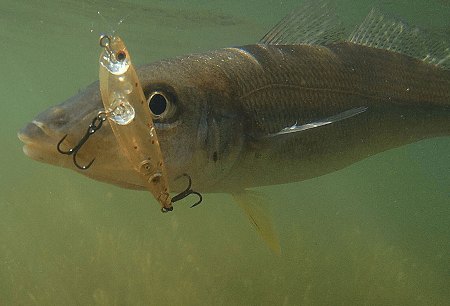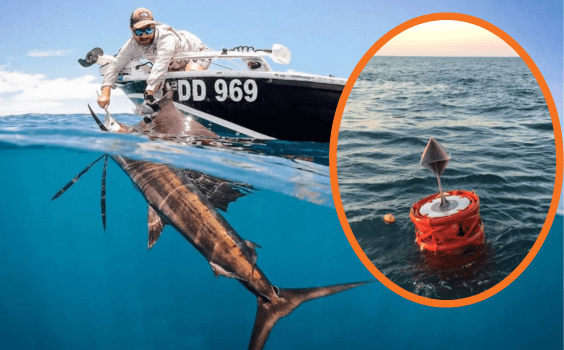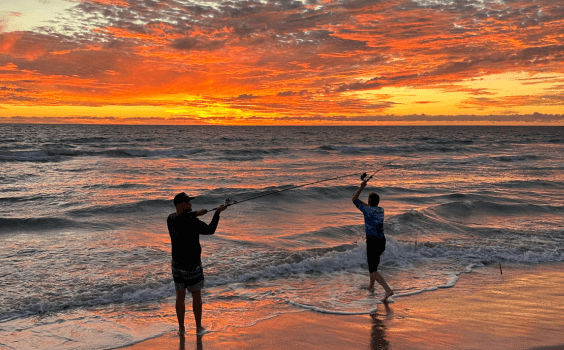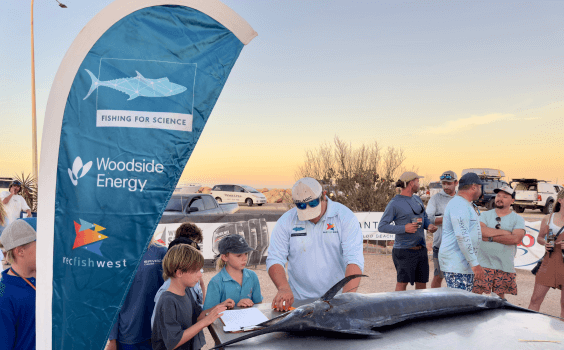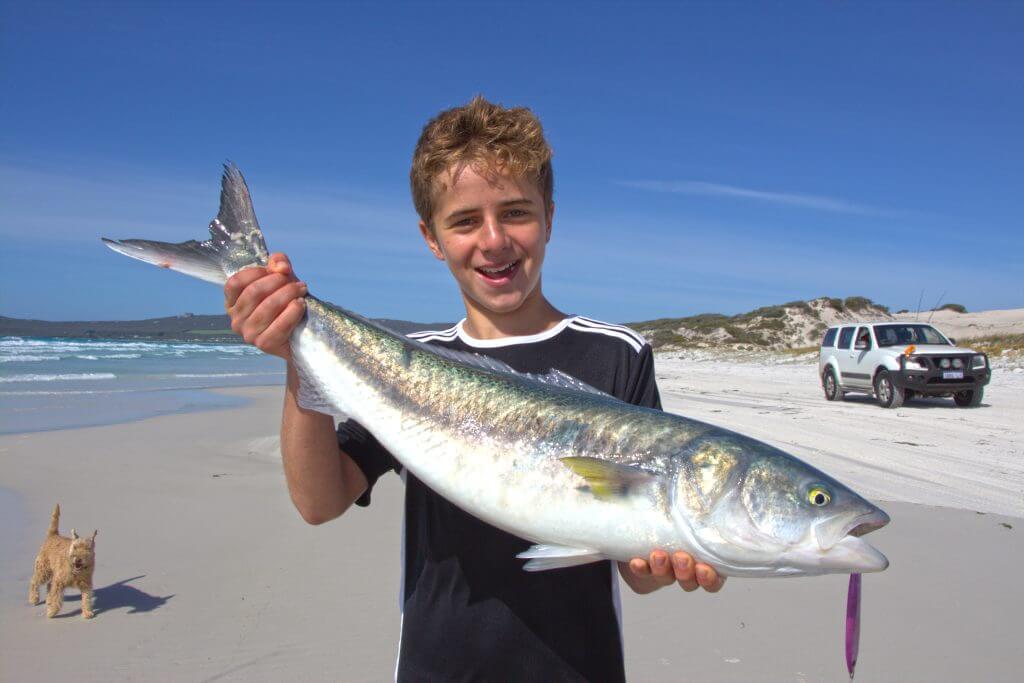In recent years, writes Western Angler editor Scott Coghlan, there has been a massive surge in interest in yellowfin whiting fishing in the bottom half of WA.
Species: Yellowfin whiting, Sillago schombergkii
Eating: 4 stars
There have always been people who like catching these chunky whiting, but the development of lure fishing for them, and particularly with surface lures, has seen an incredible boost in popularity over the last decade.
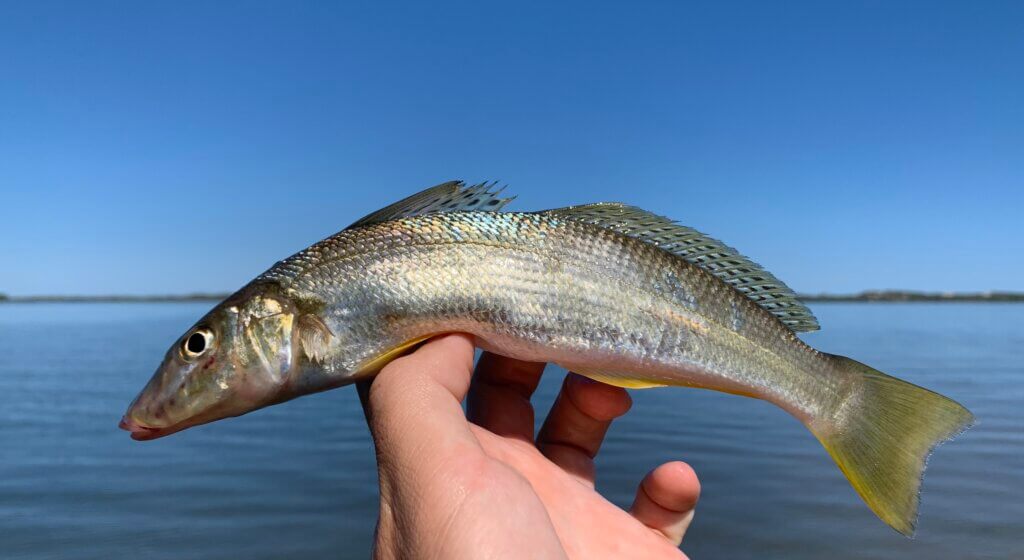
More and more anglers have discovered the joys of wading the shallows casting tiny lures for what are a surprisingly aggressive fish, and which show up in big numbers in many locations over the warmer months as they prepare to spawn.
The epicentre of this rise in popularity has been the Peel-Harvey Estuary, which is home to a big population of yellowfin that become very active in summer.
Metro fishers have become very partial to a quick run down the freeway to fish the Peel-Harvey once the annual run starts.
I can recall seeing these whiting when fishing the estuary many years ago, and wondering how they might be caught given the fact that blowies quickly pounced on any baits thrown in the water.
Yunderup local Steve Anderson was one of the first to crack the code, having picked up on a similar fishery over east that had been around for a few years.
Mark Davis also wrote a timely article on surface fishing for yellowfin in the Swan River that inspired many anglers to give this style of fishing a try.
Fishing for yellowfin is great fun and they are a strong fish for their size, growing to around 43cm.
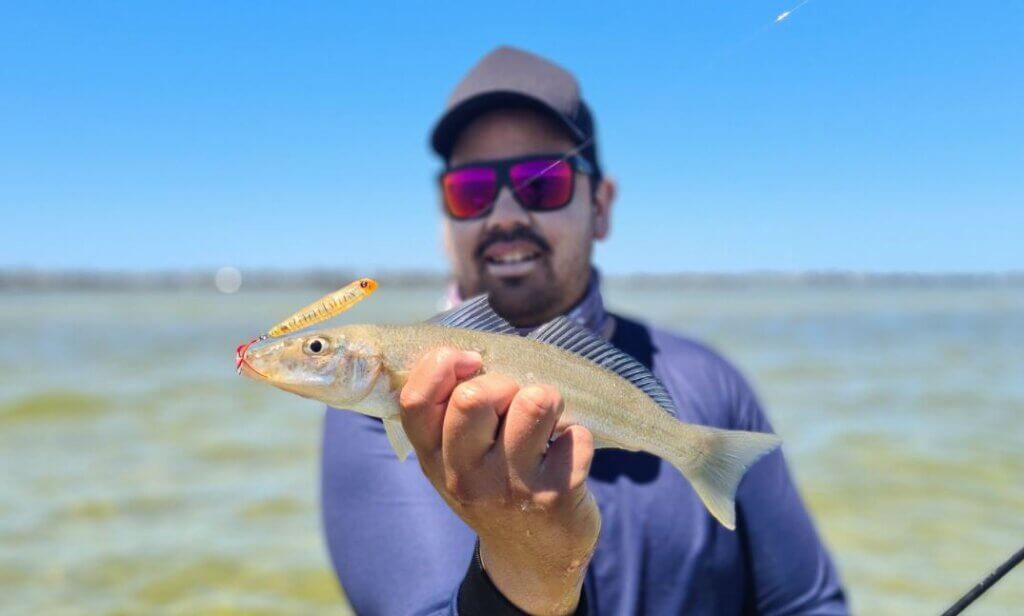
Most yellowfin caught will be 25cm to 30cm, and any fish of 35cm and above is worth bragging about.
Some anglers call them mini-bonefish and it is easy to understand why given they are usually caught in very skinny water and are, like bonefish, ghosts of the flats.
Sometimes they can be easily spotted when conditions are perfect as they mooch across the flats, perhaps little flashes of silver giving them away, but if the water is a bit dirty or the surface is ruffled they can prove impossible to see.
Often you won’t know they are there until you see them chasing the lure in a frenzied pack.
For an apparent bottom feeder, with a mouth designed to do that, it has turned out yellowfin are very partial to a lure being skipped along the surface.
They will indeed chase down lures in packs, hitting with gusto.
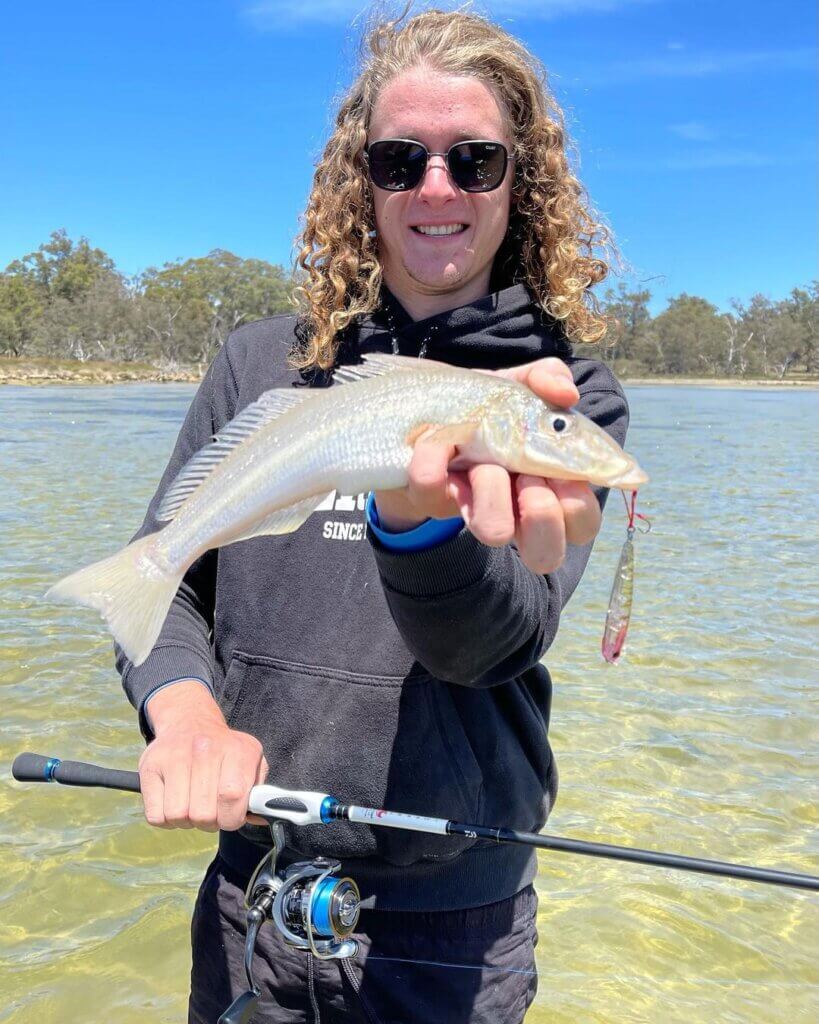
An erratic retrieve is good but unlike bream long pauses are not needed as yellowfin actually respond better to a constantly moving target. It is quite clear they think the lure is a fleeing prawn, which is part of their diet.
Small surface poppers from 5cm to 8cm long work very well on them at times, as do floating and sinking stickbaits.
Poppers offer the most visual, and fun, way of catching them.
However, if they are wary of hitting surface lures, then a sinking stickbait or small bibbed minnow might work. Lures that imitate a prawn are a great option.
Soft plastics such as Z-Man Grubz on light jigheads will work, as will the range of scented soft plastic worms.
Vibes have also proven to be very successful on yellowfin.
In areas where blowies aren’t an issue, small pieces of coral prawn, squid or bloodworms are an effective bait, and can be used on a basic running sinker rig with around 30cm of light leader and a long shank hook.
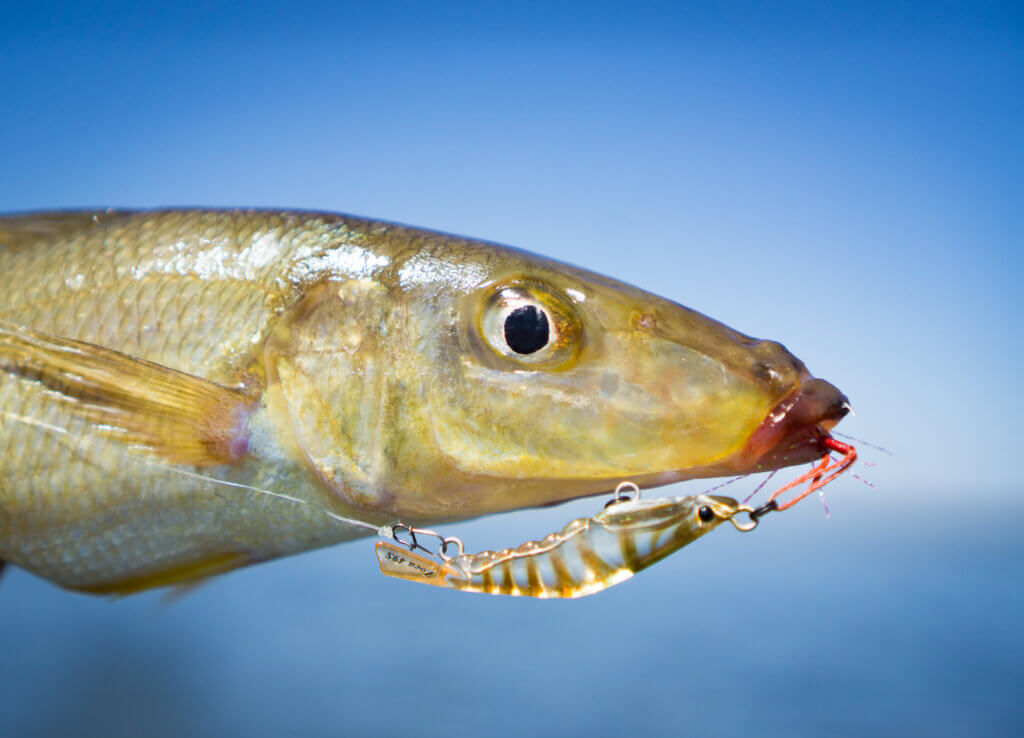
Whiting love shallow water, so the bottom half of a rising tide can be very effective in the South West, as they start exploring the flats as the water level creeps up.
Hot weather is important as they become more active in warm water, so a nice sunny day is normally ideal and fishing during the heat of the day is fine.
Interestingly, when we’ve chased yellowfin farther north, such as Shark Bay and Exmouth Gulf, we’ve found the opposite for tides.
Found as far north as Onslow, the northern yellowfin turn up in huge numbers in the shallows as the tide drops right out.
I assume this is because they can feed without having to worry about larger predators, which can’t access the rapidly shallowing water.
I am never quite sure if the northern whiting we catch are yellowfin or actually gold-lined and the exact species seems to be a matter of some conjecture, but both species are almost identical anyway.

While calm conditions are great for spotting whiting, they can also make them very spooky, and a little breeze will probably produce better fishing.
When it comes to gear required for yellowfin, a light spin rod around 2m long rated at 2kg-3kg and matching small reel spooled with braid (use light leader) or fluorocarbon is all that is needed and will maximise the fun they provide.
Whiting hit hard and fight well, but they are generally hooked in clear water and aren’t going to pose too many problems on even the lightest gear.
Most keen whiting anglers replace the trebles on their lures with a single set assist hooks, believing that this maximises hookups, and I have found yellowfin are quite adept at throwing trebles.
Many anglers like to keep a feed of yellowfin, as they taste great.
It is great idea to have a floating basket you can tow behind you while wading, into which you can put fish (and maybe even blue swimmer crabs) as you catch them, keeping them alive until you are finished.
You might then just choose to keep the biggest fish and release the others.
Because they live in the shallows, yellowfin whiting are one of our most accessible recreational fishing species.
They are fun to catch, taste great and inspire us to wade some magical locations while enjoying the summer sunshine. No wonder so many people love to chase them nowadays!
